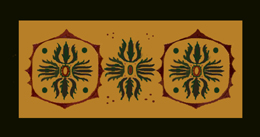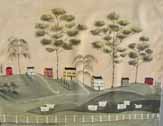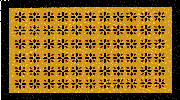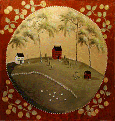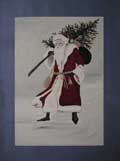
|
Selected for the Directory of Early American Craftsman 2007 - 2016
AMERICANA
FLOORCLOTHS
“Floorcloths? What are those? How beautiful...” I am
amazed at the rebirth of this functional art form.
And the versatility-any
size, shape, color, theme?
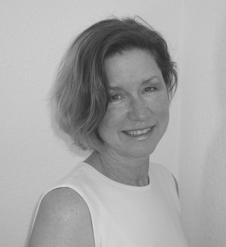
How ideal for Ohio
artist/historian Jennifer Frantz who works in any medium depending on her
inspirations. While visiting her twin sister in Maine,
they traveled to the Dr. Moses Mason house in Bethel, Maine,
built in 1813. Here, wall murals (circa 1835) attributed to artist and
inventor Rufus Porter are available to see first hand: the color and texture,
the prominence and variations of trees, the spatiality of hills and valleys.
"Their beauty cannot be truly appreciated unless seen in person,"
says Jennifer. "Texture is key to these wallscapes. The texture is not
visible or properly interpreted in photographs. To accurately recreate Porter's
genius, one must see it in person. Otherwise, the artwork never captures what
Porter intended in the first place: the intuitive feeling of timelessness in
great landscapes like his. At that point she realized the importance and the
need to visually communicate Porter's work and to continue in his
heritage by creating reproduction floorcloths displaying his technique and
color. "Porter's wall murals will not last forever, but these floorcloths
will," states the artist. Using the heaviest weight canvas #6, 22oz, water
based paints designated by the National Trust for Historic Preservation, and
finishing with the most durable polyurethane, she is able to guarantee her
floorcloths for decades to come.
Jennifer’s studio in historic Perrysburg, Ohio
supports her desire to create these one of a kind mats. Assisted by her husband
Jeff, she is able to create and produce 20 floorcloths at one time which is
critical to her wholesale clientele.
Leaving the corporate world in 2003, research dominated
her time, exploring the history of textiles in the Great Black Swamp of
Northwest Ohio. Her discovery of floorcloths in 2004 convinced her that this
was her future—to combine her artistic talent with a functioning art form that
anyone could display, use and keep for generations to come.
|
|


